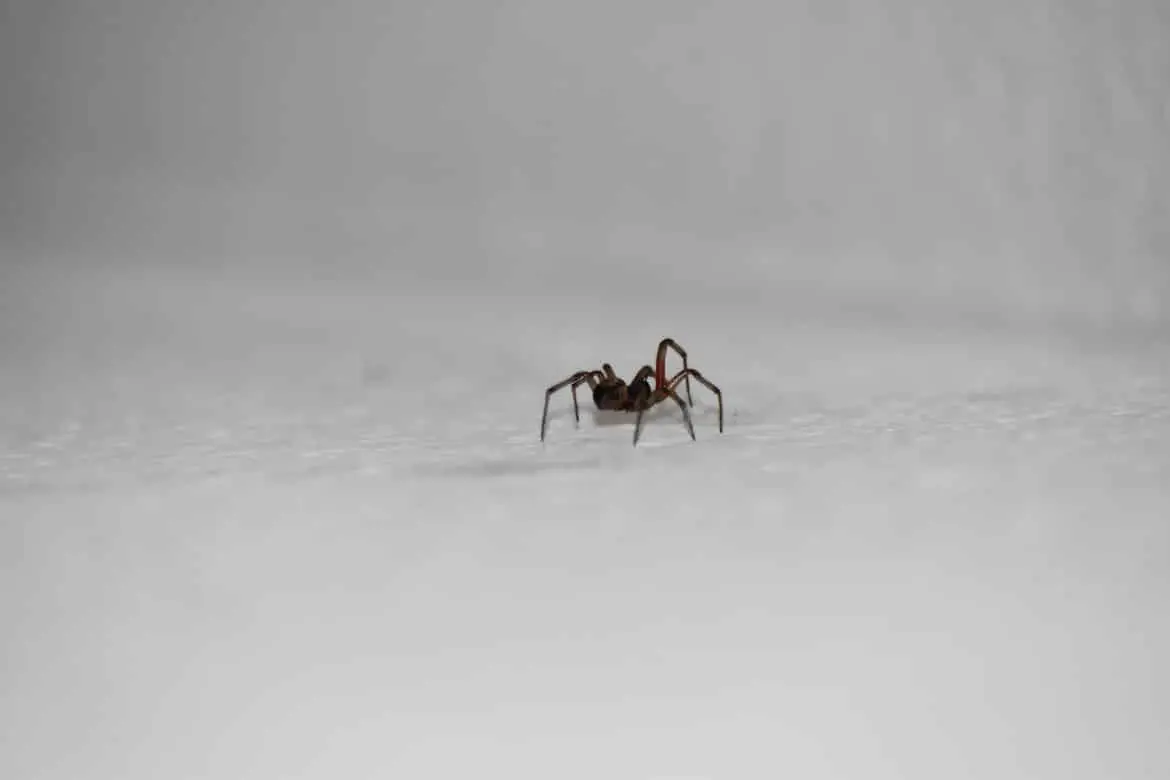Anyone who has lived in Washington knows that spiders are frequent visitors in our homes, offices, and gardens. As arachnids, they move using eight legs and can spin silk to create webs, allowing them to take cover in hard-to-reach areas. These silk threads enable spiders to glide along the breeze like tiny, creepy Mary Poppins. Despite their spooky reputation, spiders are mostly beneficial, helping to control various insect populations, including mites. In this article, we’ll discuss:
- Identification
- Signs of an infestation
- What not to do
- How Sunrise can help
- Preventing future infestations
Identification
Spiders in Washington can be difficult to identify due to their varied species and appearance. Here are some common ones:
The Hobo Spider
The Hobo Spider, or "Aggressive House Spider," is part of the Agelenidae family. Despite its name, this spider is not particularly aggressive. It creates funnel-like webs in dark, moist areas.

(Image of a Hobo Spider)
Females typically measure less than 1 inch in body length (not including legs). Hobo Spiders can travel quickly, covering 15 to 20 inches per second. They lay eggs in spherical silken sacs, and while females die after laying eggs, the species has a life cycle of about two years, with some females living over three years.
Wolf Spiders
Wolf Spiders are known for their speed and larger size. Unlike Hobo Spiders, they do not wait in webs but actively hunt on the ground.

(Image of a Wolf Spider)
Ranging from ? to 1 inch long, they are usually brown or dark brown and possess three-clawed feet for climbing. Wolf Spiders are nocturnal and may be found in house plants or garages, but they are generally not aggressive unless provoked.
Orb Weavers
Orb Weavers create large, wheel-shaped webs and are commonly found around outdoor light fixtures where insects gather.

(Image of an Orb Weaver)
With a large, globe-like abdomen often patterned in black, brown, or yellow, these spiders can grow to about ¾ to 1 inch in size. Typically non-aggressive, they prefer to flee rather than confront threats.
Jumping Spiders
This family of small, often brightly colored spiders is known for their exceptional eyesight and agility.

(Image of a Jumping Spider)
Jumping Spiders do not spin webs for hunting; instead, they ambush their prey. They can move in all directions and spin silken strands to help them lower themselves onto victims.
A Note About Black Widows and the Brown Recluse
Black Widow spiders are rare on the western side of the mountains, as they thrive in different environments. They are nocturnal and will only bite defensively.

(Image of a Black Widow)
Brown Recluse spiders are not native to Washington, with only a few specimens recorded as imported. They are significantly more common in the southeastern U.S.
Treatment
Due to their tough exoskeletons, spider treatment takes time. A perimeter spray alone may not effectively eliminate them, as spiders do not groom themselves like other pests. Our approach includes:
- Web sweeps to remove webs and egg sacs
- Regular monitoring and control of vegetation around your home
- Sealing potential access points, such as gaps around doors and windows
Spiders are beneficial creatures; while complete eradication isn't feasible or necessary, maintaining a balanced environment is crucial.
Prevention
Preventing an infestation requires proactive measures. At Sunrise Pest Management, we recommend a comprehensive maintenance service, All Pest Protection. This service provides:
- Quarterly inspections and treatments
- Exterior perimeter sprays
- Web sweeps and treatment around doorways and windows
- Regular evaluations of vegetation and potential pest attractants
Once you begin service, each quarterly treatment is only $109 before tax. If your home experiences an infestation of fleas, bees, spiders, or other pests covered by your warranty, simply call us, and we will send a technician at no extra cost under your warranty.



Comments (0)
Thanks for your comment!
Thanks for your feedback! Your comments have been successfully submitted! Please note, all comments require admin approval prior to display.
Error submitting comment!
There is a problem with your comment, please see below and try again.